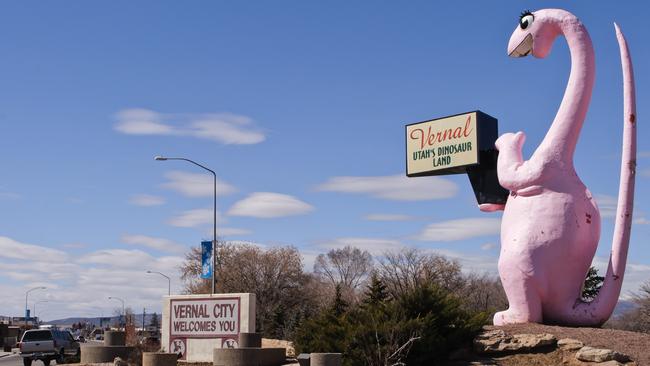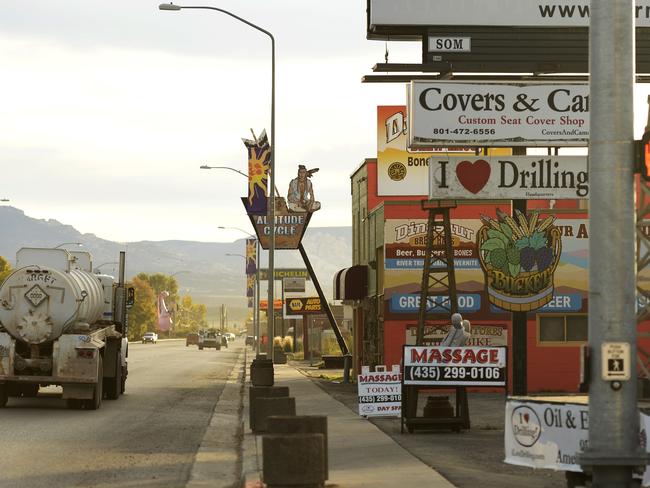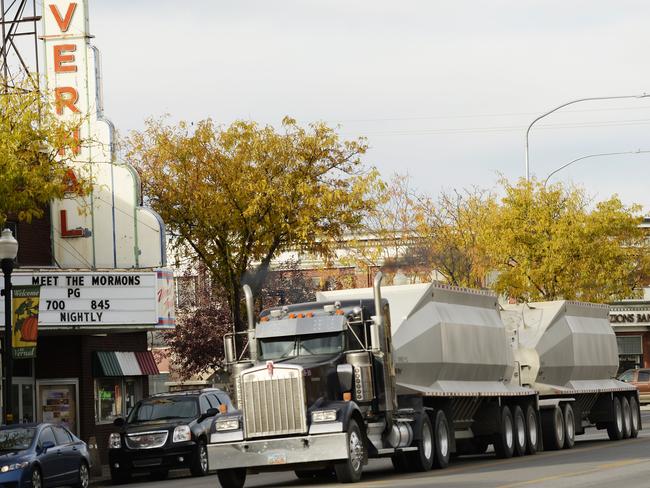‘The placenta was small and deformed’: Mystery of Utah’s dead babies
WHEN midwife Donna Young noticed a shocking trend of babies being born with fatal defects in her small town, it kicked off a Erin Brockovich-style crusade against powerful vested interests.

Mining
Don't miss out on the headlines from Mining. Followed categories will be added to My News.
CAREN Moon’s third baby seemed cursed from the start. The pregnant 34-year-old suffered bleeding and cramping in her first trimester, and miscarried during a snowstorm the week before Thanksgiving.
A few roads away, her friend Melissa Morgan was struggling with the same problems. She felt sick every time she left the house and soon retired to bed, spending weeks resting while women from her church cared for her other four kids. The baby made it — just.
“It’s a miracle she’s here at all,” said Melissa. “When I saw the placenta, it was small and deformed, like it had used up all its tissue to protect her.”
For midwife Donna Young, it was more evidence that something was very wrong in the small Utah town of Vernal. That same year, 2013, she delivered the first stillborn baby of her 19-year career, a fully formed child who never took a breath.
While Young was at the funeral, a fellow mourner pointed to something strange — six other infant graves just metres apart.
Young decided to investigate. This present-day Erin Brockovich combed through 2013’s obituaries and mortuary records, and found there had been 11 babies stillborn or dying within days of birth in a town of 9800 people. There were also two infant deaths and a foetus lost after 20 weeks.
Over the following 15 months, Young saw five babies born with birth defects, unable to see and hear, or choking when they tried to feed.

Here’s the thing: Vernal is an oil and gas boom town, which has seen massive expansion in production over the past few years.
Young dug a little further, discovering that four of the children had died within a block of one intersection, where oil trucks stop and start, sending plumes of smog into the air.
The mother of six took her findings to the region’s major newspaper, The Salt Lake Tribune, and persuaded the TriCounty Health Department to investigate whether pollution was causing an upturn in infant deaths.
“I thought, there has to be a problem here, so many deaths in such a small community,” she said.
In 2010, there were two infant deaths, about average for a small town. There was one in 2011, and four in 2012. In 2013, the mortality rate leapt to six times the national average.
A new Rolling Stone investigation lays it on the line. The spike followed a jump in production that began a decade earlier. The Uintah Basin was home to more than 11,000 wells, sending a large concentration of soot and volatile organic compounds into Vernal, equivalent to 100 million cars’ exhaust.
Rolling Stone blames the fracking boom authorised in the early days of the Bush/Cheney administration. US energy law was rewritten to the benefit of Big Oil, expanding drilling on public land and exempting processes including fracking from environmental regulations.
But the authorities will not acknowledge a possible link between toxins and infant deaths.

Uintah County Commissioner cautioned about jumping to conclusions over the infant graves, saying that an area was deliberately cordoned off for children.
When Young approached Ashley Regional hospital staff to ask whether they’d noticed a rise in stillbirths, she was met with silence, she said. Months later, the institution issued a legal threat, demanding that she stop disseminating false information about the its infant mortality rate.
Vernal doctors expressed concerns over the local health department’s inquiry into the link between poor birth outcomes and air quality, pointing out that there are many possible lifestyle factors.
When the study published in March showed a notable increase in adverse birth outcomes, epidemiologist Sam LeFevre had to admit the results drawn from Vernal’s small population were not “statistically significant”.
The Utah Department of Environmental Quality has already shown that Uintah Basin’s wintertime pollution sometimes surpasses summertime levels in the nation’s most polluted cities. But their research into respiratory illnesses and the link with air quality has proved inconclusive.
Brian Moench, president of Utah Physicians for a Healthy Environment, argues that birth studies have been conducted in small communities in the past, and that alternative methods could include setting up air monitors at the intersection. “This is primarily a matter of will and money, not a matter of scientific obstacles,” he said.
But oil and gas companies, the government and even the many locals who work in these industries don’t want production affected.
Young has been labelled an “alarmist” by her own people, received threatening calls, been attacked on local radio and online and found rat poison in the animal feed on her ranch, the LA Times reported in January. Her business is flagging. She feels stuck, unable to trust even her neighbours.
Moon is pregnant again, and this time she’s taking no chances. She monitors air-quality alerts and keeps the kids inside on “bad-air days”. The family has installed air and water filters in their home. “I’ve lost one child,” she said. “I don’t want to lose another.”
Originally published as ‘The placenta was small and deformed’: Mystery of Utah’s dead babies



